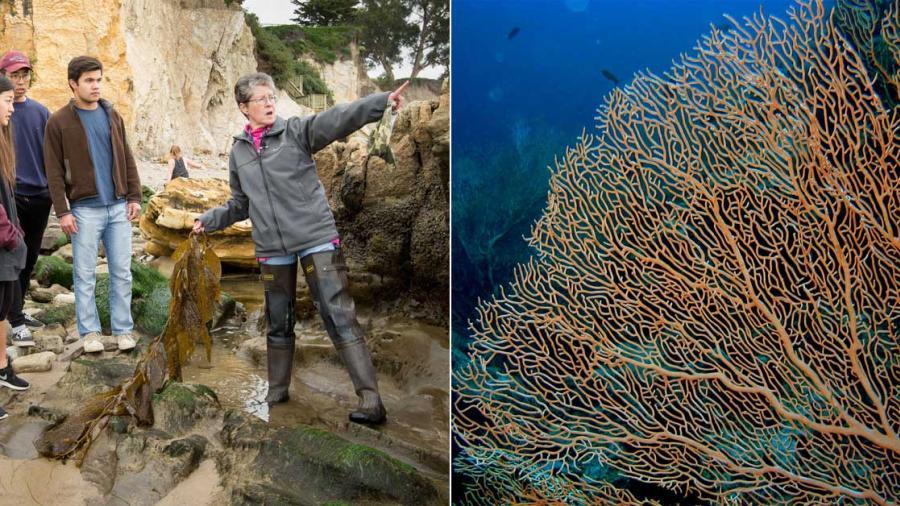Biology Professor Advises NOAA on West Coast Corals

One of the few West Coast biologists specifically studying deep-water corals, Professor Beth Horvath did some virtual deep-sea diving with the National Oceanographic and Atmospheric Association (NOAA) from 2008-10.
Their West Coast Initiative of the Deep Sea Coral Research Technology Program examined unexplored deep waters off the coasts of California, Oregon and Washington. Horvath’s expertise as a gorgonian coral taxonomist helped focus NOAA’s work. She guided shipboard crews and followed divers on camera as they explored the depths, helping them know how best to use the latest technology available: remotely operated vehicles (ROVs), autonomous underwater vehicles (AUVs), manned submersibles and other instruments. She told them what to look for, where to look for it, and how to go about collecting, recording and photographing what they see. The soft gorgonian corals (sea fans), found throughout the world’s oceans, differ from calcium carbonate reef-building coral.
“Gorgonian corals play significant roles in the three-dimensional habitat diversity of the deep sea, such as the Santa Barbara Channel,” Horvath says. “Noticeable changes occurring in the physical features of the deep-water marine ecosystem can affect them.”
Her most recent article (with co-author Robert Stone) appeared in the publication “Zootaxa.” It describes a new species of a vivid lemon yellow gorgonian coral from the Aleutian Islands in Alaska, which she has named Alaskagorgia splendicitrina.
Horvath works as a research associate in the Invertebrate Labs at the Santa Barbara Museum of Natural History. She has described new gorgonian species and consults with 15 governmental and non-governmental agencies in identifying them. She graduated from Westmont and earned a master’s degree in biology with an emphasis in marine sciences at CSU Long Beach. She joined the Westmont faculty in 1978 part time and became full time in 1990. As a field biologist, she spends her free time with students in tide pools along the coast.